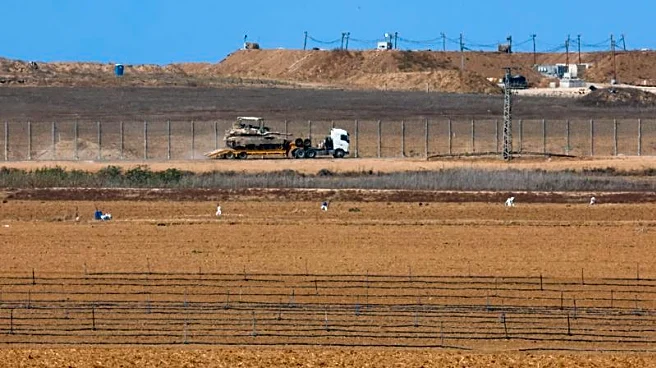What's Happening?
Oil prices have fallen following the announcement of a ceasefire agreement between Israel and Hamas, which marks the first phase of a plan to end the conflict in Gaza. Brent crude futures decreased by 0.2% to $66.13 a barrel, while U.S. West Texas Intermediate crude fell by 0.2% to $62.41. The ceasefire agreement, confirmed by President Trump, aims to release hostages and halt the two-year-old war in the Palestinian enclave. The conflict had previously contributed to a war risk premium on oil prices, as investors feared a wider regional conflict could disrupt global oil supply.
Why It's Important?
The decline in oil prices reflects reduced geopolitical risk in the Middle East, which has been a significant factor in global oil market volatility. The ceasefire agreement could stabilize oil prices and reduce uncertainty for investors, potentially leading to lower energy costs for consumers and businesses. This development is crucial for the global economy, as stable oil prices can influence inflation rates and economic growth.
What's Next?
The approval of the ceasefire agreement by the Israeli government is expected to further impact oil prices. Investors will closely monitor the situation for any signs of renewed conflict or disruptions in oil supply. Additionally, the ongoing negotiations for a Ukraine peace deal and sanctions against Russia will continue to influence oil market dynamics.
Beyond the Headlines
The ceasefire agreement in Gaza may have broader implications for Middle East diplomacy and peace efforts. It could serve as a model for resolving other regional conflicts and contribute to long-term stability in the area. The reduction in oil prices also highlights the interconnectedness of geopolitical events and global economic indicators.












